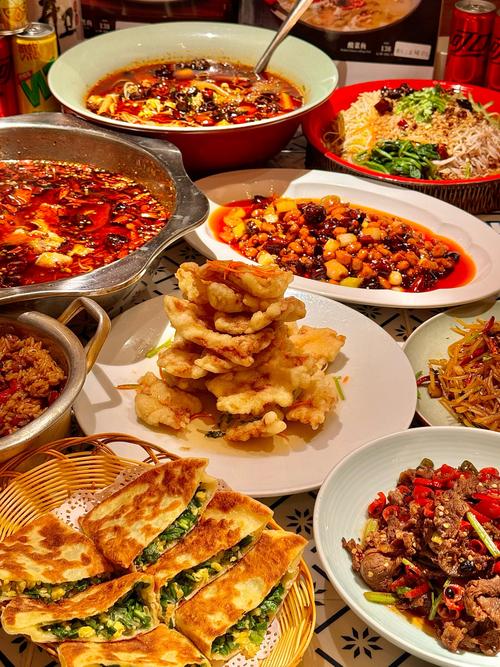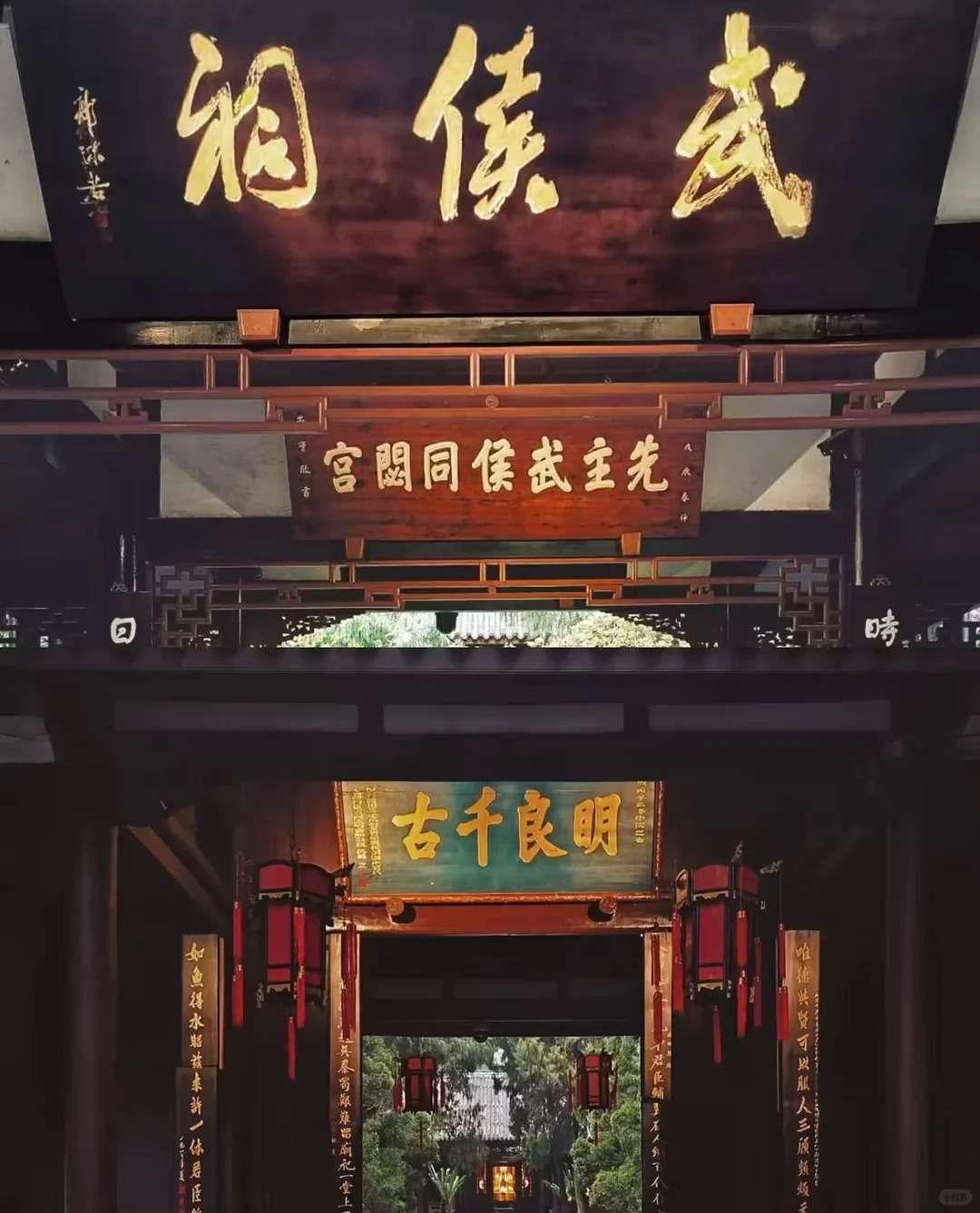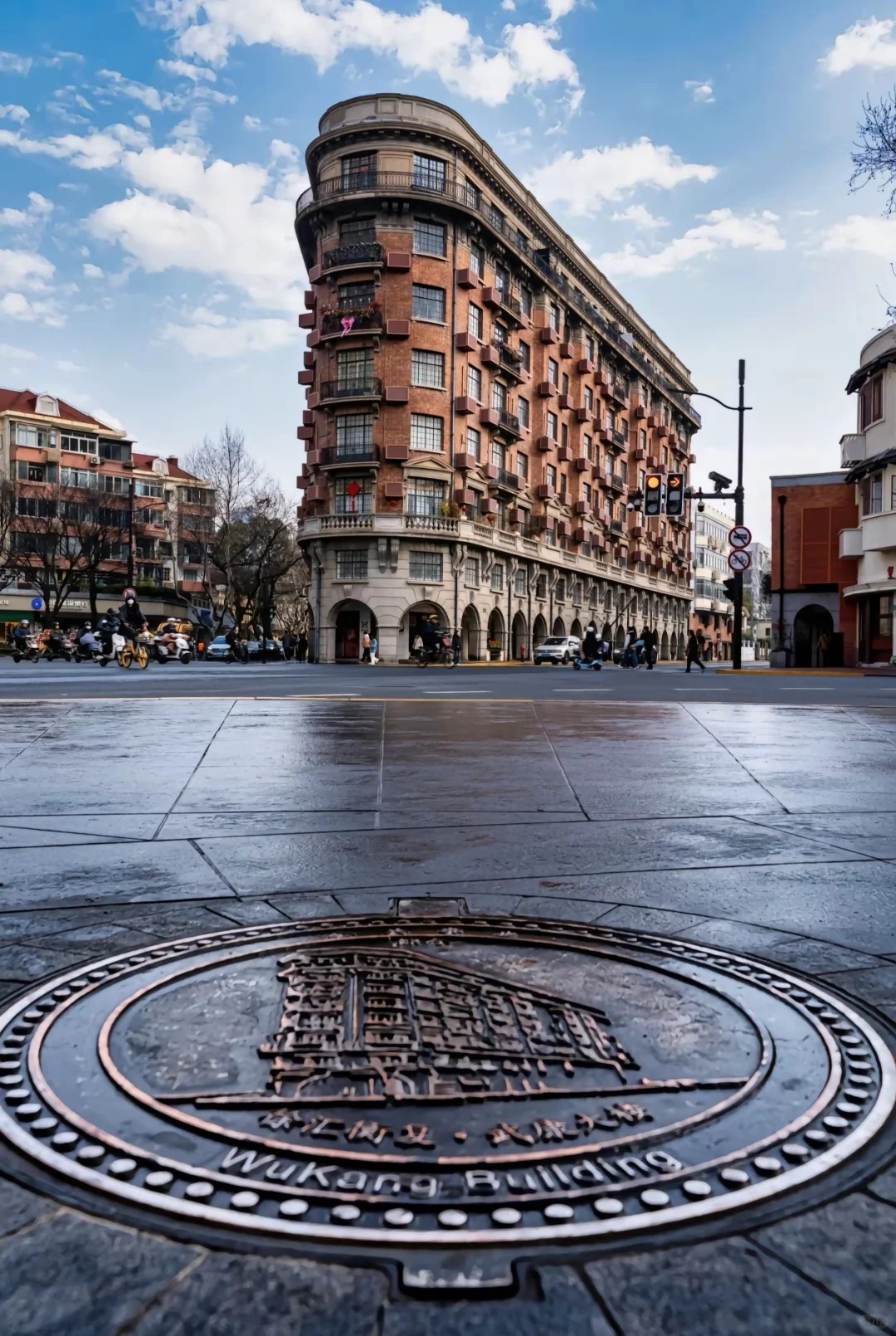As the capital city, Beijing is everything China is: rich in history and diverse culture. The town is remarkably captivating as it intertwines ancient relics with modern innovation. From historic sites like the Great Wall of China, Ring Park, and the Beijing Zoo to its lively and breathtaking markets, one can get a holistic view of what the city is about. For people with time constraints, this guide covers everything from the famous Summer Palace and the Forbidden Palace to palatial architecture and bustling markets, ensuring that all your needs in Beijing are met. The trip doesn't end here. Like the majestic pandas, big surprises lie in every corner - from breathtaking landmarks to little-known gems and elaborate cultural environments. They are bound to astonish you every time.
What Are the Most Famous Historical Attractions in Beijing?

A Look at the Forbidden City: The Home to the Chinese Emperors
China’s imperial history is exemplified by Beijing’s heart, the Forbidden City. It was built between 1406 and 1420 while the Ming Dynasty was ruling China. This magnificent and diverse Palace complex was home to 24 Chinese Emperors in the span of both the Qing and Ming dynasties. The Forbidden City is enclosed by crimson walls, which house over 980 buildings spread across a mass of 180 acres. It is referred to as an ancient wooden structure, as it has stood the test of time.
From the garden oasis that the emperors frequented to the masterfully Golden Scrutinizing platform, every single site of the Forbidden City is brimming with cultivation. Now, this UNESCO World Heritage Site draws tourists from around the globe and helps them explore China’s exotic traditions and heritage, which includes art and culture. The complex design of architecture symbolizes unity and order.
The History of Tiananmen Square and Its Modern Significance
Tiananmen Square is one of the largest public squares in the world, covering an area of 109 acres. The square, located in Beijing, is an emblem for the city both politically and as its historical center. Furthermore, it is of significant importance for the entire country. Its area traces its origins to Tiananmen Square, which was first constructed in the Ming Dynasty. Its more modern form was put in place during the 20th century to serve as both a public space and reflect China’s pride.
The square is also surrounded by significant places, including the Great Hall of the People, the National Museum of China, and the Great Monument to the People's Heroes. Some of these structures were also placed alongside the square to boost tourism. The central square of China has seen numerous nationwide activities like parades, warriors, and even periods of national mourning. Moreover, it contains many essential places within itself, such as the mausoleum of Mao Zedong. Even today, hundreds of Zedong’s supporters and the people he ruled pay royal tribute and respect at the site.
Today, the square is a busy center that welcomes thousands of tourists every day who come to explore its architectural beauty and learn more about its rich history. The Raising of the Flag ceremony at dawn is a patriotic event marked by a display of song and pageantry, depicting the spirit and strength of the Chinese people. The square, including its surroundings, does not lose its charm despite being in the center of the Beijing metropolitan area—it is the link between China’s past, present, and future.
Temple of Heaven Park: A Mark of the Ming Dynasty
The Temple of Heaven Park, located southeast of downtown Beijing, is a magnificent symbol of China’s civilization and heritage, as well as its architectural elegance. Covering more than 270 hectares, larger than the Forbidden City, this grandiose complex was built in 1420 during the Ming Dynasty and served as a ceremonial shrine where emperors were expected to worship the heavens. The construction of the park was planned so that the emperors could visit once a year to conduct elaborate rituals, where they prayed for prosperity and a good harvest.
Located at the heart of the park is the Hall of Prayer for Good Harvests, where the boundless and metaphorical principles of nature are beautifully represented in this exceptional ancient Chinese architectural marvel. The Circular and triple-gabled structure is a feat of engineering skill, as it was built entirely without the use of nails, symbolizing the bond between humanity and divinity. It is also the site of an altar where people performed open-sky ritual worship, the Circular Mound Altar, which is an integral part of Chinese Cosmology.
Besides being a UNESCO World Heritage Site, the Temple of Heaven Park is a public park. Most people from foreign countries or residents visit it for leisure and relaxation. Many people, such as tai chi practitioners and kite flyers, are seen quietly enjoying their activities in the park, surrounded by its quiet surroundings. The park's unique blend of nature, rich historical and spiritual significance, offers incredible views that enhance the beauty of Beijing, alongside ancient customs and traditions, while merging them with modern society and lifestyle, making it an invaluable treasure of the city.
How to Visit the Great Wall of China from Beijing?
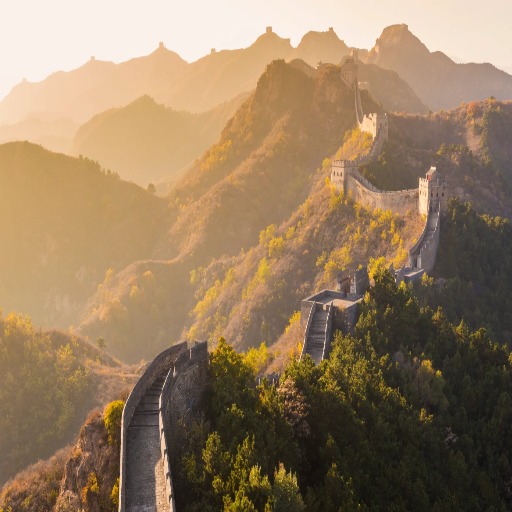
Mutianyu vs. Badaling: Which Great Wall Section Is Best for Visitors?
When considering a trip to the Great Wall of China from Beijing, the choice between the Mutianyu and Badaling sections can greatly influence your experience. Each section has its unique features, which cater to different tastes and travel preferences.
Mutianyu's peaceful charm is well known, not to mention the calm, picturesque scenery with rolling hills and thick forests. This section's more tranquil environment shields visitors from the frustration of overcrowded tourist hotspots. Casual travelers and families enjoy the restored pathways and the ease of access offered by a cable car and chairlift. Those looking for stunning views without dealing with the large crowds of more popular sections will have a great experience at Mutianyu.
Located closer to Beijing, Badaling is perhaps the most famous and frequently visited section of the Great Wall. With its blend of historical significance and grand restoration pieces, Badaling is a must-see for every tourist. Wide walkways and infrastructure development make this section suitable for people of all ages and mobility levels. Those lacking time will also find it more ideal to visit, as it is conveniently located closer to Beijing. That said, the popularity of this section means large crowds can be expected, especially during peak travel seasons.
In the end, your choice should take into account personal factors like tolerance for crowds, physical exertion, and whether your focus is on peaceful views or historical sections of the Great Wall. Both sections offer encounters with one of the world's most iconic landmarks, guaranteeing you an incredible experience no matter which choice you make.
The Great Wall: Planning Your Visit
When visiting China’s Great Wall, it's essential to consider the timing and prepare carefully. The ideal times to visit are during Spring (March to May) and Fall (September to November). During these times, weather conditions are usually mild, with pleasant temperatures ideal for hiking and photography. Spring offers blooming flowers, while fall brings stunning golden foliage, which adds to the already majestic beauty of the wall.
While planning the trip, allocate the ideal time of day to avoid busy hours. Late afternoons and early mornings are usually less busy, which provides the perfect opportunity to appreciate the history and magnificence of the structure. Moreover, weekdays are quieter than weekends for most people, especially outside of public holidays or school breaks.
Remember to wear comfortable shoes for walking on steep and uneven stone steps, and dress in layers to adapt to temperature changes. If you're exploring trails like Simatai or Jiankou, staying hydrated is essential. For visiting the restored sections, like Badaling or Mutianyu, make sure to have an itinerary, as tickets need to be obtained in advance and transport planning needs to be done, whether you're coming by car, shuttle, or cable car.
It's a good idea to exchange currency for low-cost purchases before arriving for international tourists, as not all vendors accept digital payments. These items are essential during the warm months and include a power bank, sunscreen, and a hat. With these tips, you can have a hassle-free and memorable experience at one of the most famous architectural beauties in the world.
Great Wall Tour Options: Independent Travel or Guided Tours
Each option, guided tours or independent travel to the Great Wall, has unique advantages that cater to different traveler preferences. For example, all guided tours offer convenience as they provide transportation, an attentive guide, and in-depth commentary concerning the historical significance of the Wall. Moreover, these tours offer access to popular sections like Badaling or Mutianyu, which are well-known for the breathtaking views from their restored paths. Additionally, guided tours can include extras at traditional meals and heritage site stops, further enhancing the experience.
Independent travel, for example, has its benefits, as it allows travelers to explore the Great Wall at their own pace. Moreover, independent travelers can reach Jiankou or Simatai by public transport or private vehicles. These sections of the wall have few visitors and greatly appeal to more adventurous tourists seeking secluded and unparalleled experiences. While independent tours may require additional planning, they tend to cost less than organized tours, offering affordable alternatives. Whether these travelers choose guided support or the freedom to explore on their own, the iconic Great Wall of China is bound to leave a lasting impression on their memories.
Which Imperial Gardens and Palaces Should I Visit in Beijing?
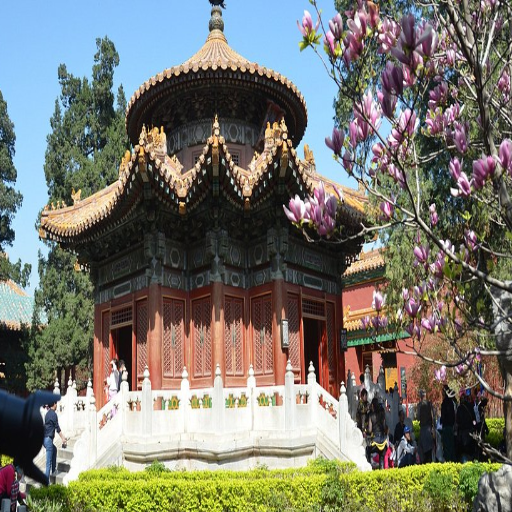
Summer Palace: Visiting the Royal Retreat in China and Kunming Lake
Being one of the most Chinese imperial gardens, the Summer Palace is the site where natural beauty meets architectural beauty. This location is 25 km north of Beijing, making it a UNESCO World Heritage site. The area covered by this site is nearly 742.8 acres, and most of the space is occupied by Kunming Lake, a man-made lake inspired by West Lake in Hangzhou. The palace serves as a center for providing both views and boat rides for tourists.
The Summer Palace was constructed in 1750 for Qianlong's empress as a getaway from the hustle and bustle of the city. The place was designed using various features of ancient Chinese architecture, along with modern design elements like towers and pavilions. A mountain named Longevity Hill is situated above the lake which has various structures Built on it such as Tower of Buddhist Incense. The wealth of cultural and historical landmarks within the Summer Palace is sure to capture the attention of every visitor. The Long Corridor, which is over 2,300 feet long, has thousands of paintings of Chinese legends, landscapes, and folklore. One of the unique features on the lake’s shore is the Marble Boat, which represents the legacy of the Qing Dynasty. Other essential features are the Seventeen Arch Bridge and Suzhou Market Street, which both add to tourists' memories of China's progress during its Imperial Era.
While at the Summer Palace, one is likely to enjoy quiet walks around the Dehe Garden or attend traditional performances at the Dehe Garden Theatre. Its rich history makes the Palace a significant landmark and a primary attraction for overseas visitors who come to China.
Jingshan Park: Perfect for Viewing the Forbidden City from Afar
Jingshan Park lies directly north of the Forbidden City and offers historical value, as well as being an imperial park famous for its best views of Beijing's architecture. The central hill of Jingshan Park was constructed from the soil dug out to create the moat of the Forbidden City. It is said to be one of the most remarkable engineering feats of ancient China. The view from Wanchun Pavilion, also known as the summit of the hill, is jaw-dropping, as it offers a panoramic view of the Forbidden City, the golden rooftops, and the bustling modern city.
My favorite time to visit is when peonies bloom, symbolizing prosperity and beauty, which typically flowers in the spring. There is no denying that Jingshan Park boasts both enhanced beauty and historical significance. It is well known as the location where the Chongzhen executed himself, marking the end of the Ming Dynasty. If you ever find yourself in Beijing, be sure not to miss out on the blend of natural beauty and wondrous historical sites.
Ancient Imperial Architecture: Design Aspects of the Palaces in Beijing
Beijing’s ancient imperial architecture tells the history of its expansive dynasties through precision and complexity. The most important aspect of this type of architecture is the hierarchical arrangement of spaces, which includes all buildings placed on a north-south axis, portraying order and control. Palaces, particularly the ones in the Forbidden City, were made using ancient Chinese timber framing techniques that showcased intricate Chinese joinery methods that did not require nails. These structures also used vibrant imperial yellow roof tiles, signifying the emperor’s control and supreme power, while ornate ridge ornaments and glazed decorations added a touch of splendid elegance.
Balanced symmetry, along with the careful placement of courtyards and gardens, also helps foster harmony between humans and nature. Architecture elements include red pillars, dragon and phoenix motifs, intricately carved red stone bases, and various other aspects to portray authoritative and divine power. Gates, sculptures, halls, and pathways were all crafted with the finest attention to detail to achieve symbolic, functional, and spiritual goals. The brilliance and beauty, paired with the deep meanings etched into the structures, give imperial Chinese architecture the honor of offering an indelible legacy.
Where Are the Best Modern Attractions in Beijing?
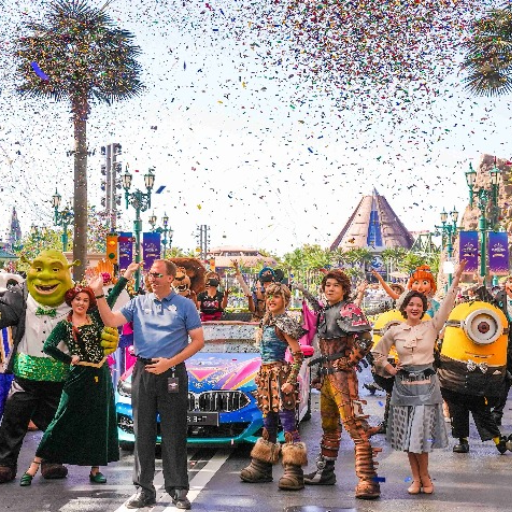
798 Art District: Beijing's Contemporary Art Scene
798 Art District, located at the center of Beijing, is a stunning synthesis of industrial culture and modern art, both of which are glorified by its mid-century factory complex. 798 Art District is a former factory complex that has been transformed into a sprawling industrial hotspot filled with numerous cultural galleries, studios, and cafes. Bauhaus architecture serves as an epic backdrop for scores of international visitors who want to marvel at contemporary exhibitions, installations, art shows, and performances.
The district has evolved into one of the most important art centers in China, hosting international biennials along with domestic contemporary art fairs, showcasing how rapidly Beijing is changing. Beyond art galleries, tourists can find life in every corner through animated street art, outstanding bookstores, and amazing little shops. 798 Art District isn’t just a place worth visiting. It's a symbol of China's innovation, ever-changing to accommodate new creations at each visit. For both art lovers and exploratory tourists, it's an absolute must to encounter Beijing's modern art culture.
Universal Studios Beijing: Family-Friendly Entertainment For Everyone
If visitors of all ages wish to have an experience to remember, then look no further because Universal Studios Beijing is one of the world's top theme parks located in Beijing. The park spans over 400 acres and is home to infamous themed zones such as the Wizarding World of Harry Potter, Jurassic World Isla Nublar, and Hollywood. Every zone features lifelike attractions, including rides, live shows, and interactive games that allow guests to immerse themselves in their favorite movies.
For theme park enthusiasts, the Transformers Metrobase rides, along with the Jurassic Flyers, are sure to satisfy. Not to mention, the younger audience can also appreciate Minion Land. Aside from the rides, guests can enjoy remarkable live stage performances, including fascinating parades and action-packed stunt shows. With all these features combined, the characters are brought to life in front of your eyes in remarkable fashion.
From country-specific fast food chains to à la carte restaurants, themed diners, and souvenir stores that offer limited retail merchandise tailored to the theme park, the park guarantees an awe-inspiring experience for both Shanghai and worldwide tourists. That said, the park includes state-of-the-art technology and entertainment. Universal Studios Beijing remains the preferred hangout for family and friends, especially in China.
Shopping and Dining Areas of Interest in Contemporary Beijing
Contemporary Beijing is a paradise for shoppers and diners, and vividly showcases the mix of old and new. For luxury shoppers, Sanlitun Taikooli is a modern shopping district featuring flagship stores of designer brands and exclusive boutiques that serve the city’s shopping elite. Also, Wangfujing Street, one of Beijing’s oldest and most famous shopping areas, features high-end department stores alongside souvenir shops, blending contemporary shopping with a touch of history.
For both locals and tourists, shopping is incomplete without trying the city's culinary delights, as they make Beijing a place for unforgettable and distinctive experiences. For more classic preferences, visiting Quanjude Roast Duck restaurant, an age-old institution, is a must in Beijing for its signature dish, which is ethnically prepared. On the other hand, trendy food halls like Beijing Fun and 798 Art Zone serve as a melting pot of the world’s cuisine, along with Beijing’s characteristic fusion food that reflects the city's cosmopolitan nature. The blend of traditional and contemporary makes shopping and dining in Beijing as colorful and energetic as the city itself.
How to Create the Perfect Beijing Itinerary?
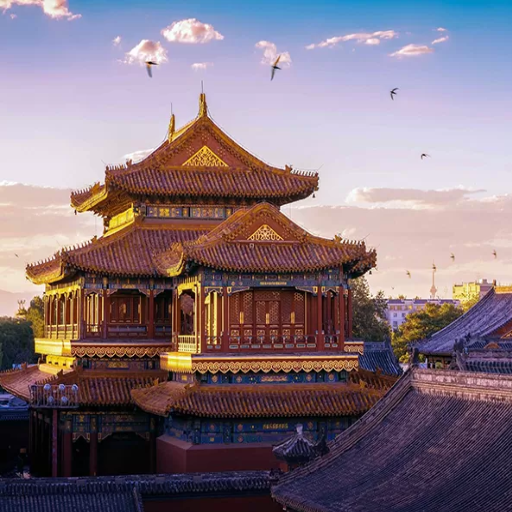
First Timer's Guide: 3-Day Beijing Trip Itinerary
As a first-time visitor, I would devise an ideal 3-day Beijing itinerary that takes into account the striking contrast of modernity and history embedded within the city. On the first day, I would start my day as early as possible with a visit to the Forbidden City, as it is one of the most famous heritage sites. The sprawling courtyards and multi-exhibit collections would take a good deal of time. After this, I could stroll to Tiananmen for some unparalleled pictures of the place, while soaking in the history associated with it. An iconic dish for lunch would be Peking duck, and I could have it at one of Beijing’s famous restaurants. For the evening, I recommend heading to Jingshan Park to enjoy the sunset views of the Forbidden City.
My second day morning would be set aside for the Great Wall located in Chaozhou. For a one-of-a-kind experience, I recommend the Mutianyu section due to its breathtaking views and slightly lower number of visitors. In the afternoon, I would return to the city and visit the Summer Palace, where I could relax and admire the seasonal beauty of the flowers, and take a pleasant walk by the lake. If I had any other plans, I would have lunch at Wangfujing Snack Street, which is busy in the evenings and makes a good spot to try new foods and get a feel for Beijing's incredible nightlife.
This would be my last day, and I'd want to visit a combination of historical and modern places. Going for a morning walk at the Temple of Heaven, where I can enjoy having a calm and peaceful time, would be a great start. The stunning building and the locals doing Tai Chi add to the beauty. The next stop would be the 798 Art Zone, where I can enjoy art and culture, and walk into different galleries and small cafes. After all this intensive walking, I'd like a place to unwind. Sanlitun has many restaurants with international menus and an energetic nightlife, which makes it possible for me to reflect on and remind myself of all the things that make Beijing such a unique blend of old traditions and modern advances.
Beijing in Different Seasons: When Is the Ideal Time to Visit?
In my opinion, the best times to visit Beijing are either spring (March to May) or autumn (September to November). The weather during these seasons is the best, with mild temperatures and clear skies, ideal for city exploration. The spring in Beijing is particularly gorgeous because the cherry blossoms at Yuyuantan Park are in full bloom – the blossoming flowers create a stunning sight and an incredible backdrop for sightseeing. On the other hand, autumn has ‘golden foliage’, which, along with the crisp air, is perfect for visiting landmarks like the Great Wall or the Forbidden City. The autumn ensures that you skip the stifling summer heat as well as the winter chill.
Beijing during the summer is incredibly vibrant, with an added bonus of vivacious energy during the Dragon Boat Festival; however, the heat and humidity can be a concern. The temperature tends to soar above 86°F (30°C), which makes popular tourist spots unbelievably crowded. The winter season, from December to February, offers a different kind of appeal with fewer tourists around and clear, chilly days. Alongside the lack of crowds, you can enjoy Beijing’s famous Peking duck or view the historic sites, such as the Great Wall or Forbidden City, that are dusted with a layer of snow.
Nevertheless, the region is often bitterly cold, with temperatures plunging below freezing, which might be off-putting to some. There is no one best time to visit, as it's a matter of personal preference. I prefer spring and autumn since they not only offer favorable conditions but also the natural beauty, coupled with fewer people, makes them all the more appealing. This, to me, captures the full essence of Beijing's rich culture and history without any discomfort.
Beijing Attractions- Combination: Tips and Time Saving Routes
While exploring Beijing, careful planning and foresight are essential to experience the key attractions fully within a limited time. One of my favorite time-saving routes starts at Tiananmen Square, followed by the Forbidden City, as both capture the essence of Beijing's history and culture and are also located next to each other. If you arrive in the morning, you can beat the crowd and enjoy the grand construction of the building known as the Forbidden City in peace. After that, I also often recommend heading north to Jingshan Park, which also offers breathtaking views of the golden rooftops of the Forbidden City. This is a perfect place to relax and unwind, and ideally capture some stunning photos.
To enjoy a peaceful afternoon, it is best that you take a short taxi ride to the Summer Palace located on the northwestern edge of the city. Its enormous grounds and beautiful Kunming Lake make it the perfect getaway from the busy lifestyle at the Forbidden City. During one season, taking a stroll around the gardens or going for a boat ride is a great way to appreciate the beauty of Chinese traditional landscaping. As for the remaining energy in the evening, you could take a trip to Nanluoguxiang, located outside of the Hutong. It provides a glimpse into ancient Beijing. The alleyways are home to several shops and restaurants, making it a perfect spot for dinner and souvenirs. From what I've experienced, this allows tourists to cover the prominent landmarks in a simplified manner and complete their exploration of Beijing at a more relaxed pace.
Frequently Asked Questions (FAQs)
Q: What are the top places to visit in Beijing for first-time travelers?
A: I recommend the Forbidden City, the Great Wall (Mutianyu or Badaling), the Temple of Heaven, the Summer Palace (with Kunming Lake), Tiananmen Square, and the National Museum of China, as well as the 798 Art District for contemporary art. For a taste of traditional life in Beijing, the hutong neighborhoods are a wonderful experience. These tourist attractions can be covered in a 4-5 day visit to the capital of China.
Q: Is the Lama Temple recommended to visit in Beijing?
A: Without a doubt! The Lama Temple, also known as Yonghe Temple, is one of the most important Tibetan Buddhist temples in Beijing and is worth visiting. In the 17th century, this impressive compound was built and features five main halls with majestic Buddha statues, including the remarkable 18-meter-tall Buddha carved from sandalwood. The temple helps people forget the city's hustle and bustle and understand Chinese Buddhism. Lonely Planet has also recommended it as one of the most authentic religious sites in Beijing. It stands out even among the best Tiananmen tourist attractions. The combination of Tibetan and Han Chinese architectural styles makes it a unique Beijing cultural exploration.
Q: What is the best way to explore the hutong areas of Beijing?
A: When you explore the hutongs in Beijing, you get a good feel of the life of people living in Beijing. These alleyways, along with the quadrangle inventory, are ancient. The best hutongs to visit include Nanluoguxiang, Yandai Xiejie, and Wudaoying Hutong. You can explore them on foot, by bike, or take a rickshaw tour. Many boutiques have opened in cafes and restaurants, adding a modern touch to the Chinese scene. For an authentic vacation experience, guided tours for locals are best as they invite you into their courtyard. Some tour packages even offer exploring the hutongs, but they are pretty easy to navigate on your own in China.
Q: What are the places to visit in Beijing related to the legacy of Chairman Mao?
A: Begin your exploration of Mao Zedong’s legacy in Beijing at Tiananmen Square. At this location, you can see his portrait placed on the Tiananmen Gate and also visit his mausoleum (Chairman Mao Memorial Hall), where his embalmed body is on display. The National Museum of China, located on the eastern side of the square, features many exhibitions related to the founding of the People’s Republic of China under Mao's rule. Also, the Military Museum of the Chinese People's Revolution showcases artifacts from the revolution. For further context, consider Zhongnanhai, located near the old imperial garden and currently the headquarters of the Chinese Communist Party. Although tourists only have access to the outer portion, it provides an insight into the Mao era. Consider making these stops to understand the impact Mao had on modern China.
Q: Recommended places to visit in Beijing include the Summer Palace with Kunming Lake, don't they?
A: Surely, Hong Kongers and tourists alike cannot get enough of The Summer Palace and Kunming Lake. As one of the best places to visit in Beijing, this UNESCO World Heritage site is a cherished location because it served as an imperial palace retreat during the Qing Dynasty. The grandiose grounds contain not only Longevity Hill but also beautiful gardens, pavilions, the famous marble boat, and the Elliptical Piracy Inn. Aside from that, 3 out of 4ths of the palace grounds are covered by Kunming lake, wherein one can ride a boat during the hot months. Another notable feature is the long corridor, which has over 14,000 paintings as well. It's indispensable to spend half a day here if you intend to appreciate the stunning beauty and historical importance of the Summer Palace. The best months to visit the palace are spring and autumn when the weather is relatively mild. During these months, the gardens are in full bloom, making it the perfect time to take advantage of the weather.
Q: What is the Temple of Heaven, and what is the importance of the Hall of Prayer for Good Harvests?
A: When it comes to the Temple of Heaven, its construction region will always stand out. It is because this is the area where emperors from both the Ming and Qing dynasties performed rituals to pray for good harvests. Hands down, the most iconic building of the Temple of Heaven is the Hall of Prayer for Good Harvests. This wondrous circular building is made of wood and features a blue-tiled roof, which symbolizes heaven. This depicts ancient Chinese cosmology. Not only does it hold historical significance for China, but it is also prominent religion-wise. This construction can be found throughout promotional materials from Beijing. In Red Circle Park, the temple is located, where one can observe locals in Chengdu practicing Tai Chi at dawn. The Temple of Heaven is renowned worldwide and is a genuine UNESCO World Heritage Site. It is recommended to spend 3 to 4 hours there to understand its wonders.
Q: Why should I include the National Museum of China in my Beijing itinerary?
A: The National Museum of China is a must-see on your Beijing itinerary, as it boasts one of the largest collections of Chinese artifacts and art in the world, spanning from prehistoric times to the modern era. This enormous museum is located on the eastern side of Tiananmen Square. Visitors can appreciate China's immense culture and history through its various permanent exhibitions, such as “Ancient China” and “The Road to Rejuvenation.” The museum houses over one million precious artifacts, including various jade pieces, ancient bronzes, calligraphy, and paintings. This museum provides invaluable context for understanding the amazing sites you'll visit throughout Beijing and the rest of China. Furthermore, the museum has superb English explanations and does not charge an admission fee (although ticket reservations must be made in advance using a passport). It's perfect for the first day in Beijing and provides an ideal indoor activity in case the weather isn't good.
Q: Which sights can be covered in a single day in Beijing?
A: Beijing has several day trip sites worth visiting. One of the most popular is the Great Wall, with its many sections to visit. Mutianyu offers stunning views and is not overly crowded, while Badaling is more convenient to get to but much busier. The Ming Tombs, which are the final resting place of 13 emperors from the Ming Dynasty, are also fascinating. If you want to see something natural, visit Fragrant Hills Park, which is most breathtaking in the autumn. Gubei Water Town is an ancient town that is a stunning combination of traditional houses and mountains. The Eastern Qing Tombs offer insight into imperial burial customs, and the less well-known Western Qing Tombs are just as impressive to see. Chengde Mountain Resort is an imperial summer retreat, and although it requires an early trip, it is well worth it. Most places can be reached from Beijing within 1 to 3 hours, so they can be conveniently added to your itinerary when traveling around China.
Q: Do I require a visa to access the attractions in Beijing, China?
A: Indeed, nearly all international travelers require a visa for China if they intend to visit the attractions in Beijing, although there are some exceptions. China provides visa-free transit for travelers from certain countries who stay for 72 or 144 hours (3 or 6 days) and are en route to a third country. This exemption allows travel to Beijing and its surrounding areas. However, if you want to stay for a longer period or visit other parts of China, you need to obtain a proper tourist visa (L visa) before your trip. The application process typically includes submitting a passport along with an application form, photo, travel itinerary, and sometimes hotel reservations. It is advisable to apply 1-2 months before your intended travel date to China. For the most up-to-date information on visa policy and any special rules that may be relevant to your nationality, consult the Chinese embassy or consulate in your country.
Q: What are the recommended spots for experiencing Beijing's authentic cuisine?
A: Authentic cuisine is readily available throughout Beijing's attractions. For authentic Peking duck, you can visit Dadong Roast Duck, Quanjude, or Li Qun. Family-style catering restaurants serve Beijing specialties such as zhajiangmian (noodles with sauce) around Nanluoguxiang and Wudaoying Hutong. Guijie (Ghost Street) is particularly renowned for its spicy crayfish and 24-hour restaurants. Try imperial dishes at Najia Xiaoguan, located near the Forbidden City. The Muslim Quarter’s halal offerings, like lamb skewers and hand-pulled noodles near Niujie Mosque, are excellent. Local markets such as Sanyuanli Market have stalls that offer street food. Malls like APM or Shin Kong Place have food courts that offer fast and quality meals for tourists visiting nearby attractions. Wangfujing Snack Street is famous for its traditional dumplings and other exotic foods, making it a must-visit for adventurous eaters and a cultural experience in Beijing.
